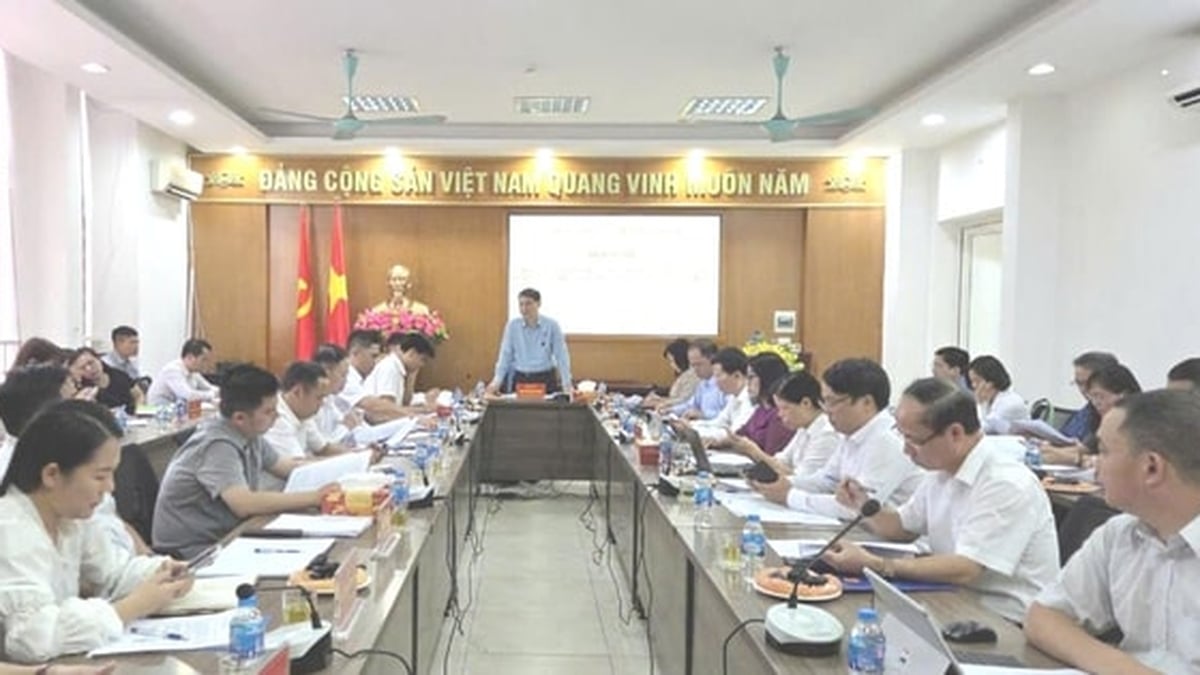The roadmap to gradually eliminate credit growth limits is being accelerated by the State Bank, opening up expectations for a flexible capital allocation mechanism, suitable for a modern market economy . Along with that is the issuance of Circular 14/2025/TT-NHNN, a pivotal step to tighten capital safety standards, direct credit to essential sectors, and limit systemic risks.
Credit is still the main "blood vessel", needs reasonable flow
According to the State Bank, by the end of June 2025, total credit in the entire system increased by 19.4% over the same period, while money supply increased by approximately 17%, the strongest increase since 2017. Accordingly, it reflects the fact that in the context of an underdeveloped capital market, bank credit is still the main capital mobilization channel for businesses, especially private enterprises.
However, the credit flow structure is still inadequate. Data from the State Bank shows that credit growth mainly comes from transportation, real estate business and other sectors, while supporting industry and high technology are the sectors and industries expected to lead sustainable growth, but the credit growth rate still accounts for a low proportion.

It shows a paradox that capital is still being strongly attracted to high-risk areas instead of flowing into fundamental industries with high added value and strong spillover potential. Thus, without a flexible and effective capital allocation mechanism, the economy can easily fall into a state of imbalance between capital supply and demand, between hot and sustainable growth.
Therefore, the State Bank's direction is clear, moving towards eliminating the credit limit mechanism, while raising capital safety standards to control capital flows more effectively instead of administrative intervention.
Circular 14/2025/TT-NHNN - A stepping stone to "eliminate credit room"
In the move towards eliminating credit room, one of the most drastic steps that has just been implemented is the issuance of Circular 14/2025/TT-NHNN, which will take effect from September 15, 2025. This document profoundly changes the way capital adequacy ratios are calculated, monitored and adjusted, approaching Basel III standards, while also being consistent with the operational practices of banks in Vietnam. This Circular sets higher requirements for specific capital adequacy ratios as follows:
Core capital ratio Tier 1 ≥ 4.5%, Tier 1 capital ratio ≥ 6%, minimum CAR ≥ 8%. In particular, for the first time, the Circular includes mandatory capital buffers including: Capital Conservation Buffer (CCB); Counter-cyclical Capital Buffer (CCyB); Buffer for systemically important banks (D-SIBs buffer).
The CAR for profit sharing is also strictly regulated with a gradual increase, from 8.625% in the first year to 10.5% in the fourth year, or 2033 or earlier if applied early. This means that if they want to distribute profits in cash, banks must improve their actual capital capacity and risk tolerance.
In addition, Circular 14 also classifies in more detail the collateral, loan purpose and repayment source, applies different risk coefficients to each type of real estate and mortgaged assets, thereby helping to quantify credit risks more realistically, avoiding the situation of "pretending" reports as before.
For agricultural , rural, and SME loans, the Circular applies a more favorable risk coefficient, in line with the direction of increasing credit for these sectors. Meanwhile, the risk coefficient for bad debt has increased sharply, forcing banks to be more cautious in approving and processing credit.
Reshaping capital capacity and bank classification
Circular 14 creates a real “capital test” among banks. Banks with good capital buffers, high asset quality, clear credit strategies, and less dependence on real estate lending will quickly overcome the new requirements and gain an advantage in the period when there is no longer a credit limit.
According to a report from Vietcap, banks such as Vietcombank, Techcombank, and BIDV are standing out thanks to: Current CAR at a high level (over 10%); Healthy collateral portfolio, mainly urban real estate with red books; Strong development strategy in retail and SME - two areas with preferential risk coefficients.
Vietcap assessed that the new regulations on capital safety not only raise governance and risk control standards, but also contribute to reducing dependence on administrative tools such as credit rooms - a "crude" form of intervention that has been maintained for more than a decade.
Deputy Governor of the State Bank of Vietnam Pham Tien Dung once commented: “No tool is forever. Eliminating room is necessary, but must be accompanied by strict capital standards to keep the system safe.”
Thus, Circular 14 is a necessary and drastic preparation step, helping to "pave the way" for the elimination of the credit limit mechanism from 2026, replacing it with a market mechanism based on financial capacity, credit rating and risk management standards.
Thus, removing credit limits is not only a change in management techniques, but also a transformation in the mindset of monetary and credit policy management, from an administrative control model to a market mechanism with intelligent regulation.
This will promote healthy competition among credit institutions, forcing banks to improve capital quality, risk analysis capacity and resource allocation efficiency. At the same time, it will direct capital flows into production and business, technological innovation, and limit asset speculation.
Above all, eliminating the credit room is a necessary condition to realize the ambitious development goals by 2030 according to Resolution 68 - with 2 million operating enterprises, at least 20 large enterprises participating in the global value chain and a ratio of 20 enterprises/1,000 people.
However, to make the "room removal" effective, it is necessary to combine solutions such as improving the State Bank's monitoring capacity; Developing the corporate bond market, medium- and long-term capital market; Building a high-quality domestic credit rating system; Promoting digitalization in credit granting and controlling cash flow.
Vietnam is facing a major crossroads: continuing to maintain administrative intervention or breaking through to a modern operating mechanism. Circular 14 and the roadmap to eliminate credit room are bold but necessary steps, paving the way for a more transparent, efficient and sustainable financial system./.
Source: https://baolamdong.vn/bo-room-buoc-ngoat-tai-thiet-thi-truong-von-ngan-hang-383902.html























![[Photo] National Assembly Chairman attends the seminar "Building and operating an international financial center and recommendations for Vietnam"](https://vphoto.vietnam.vn/thumb/1200x675/vietnam/resource/IMAGE/2025/7/28/76393436936e457db31ec84433289f72)












































































Comment (0)